Michal Wroczynski
Exploring the Potential of Feature Density in Estimating Machine Learning Classifier Performance with Application to Cyberbullying Detection
Jun 04, 2022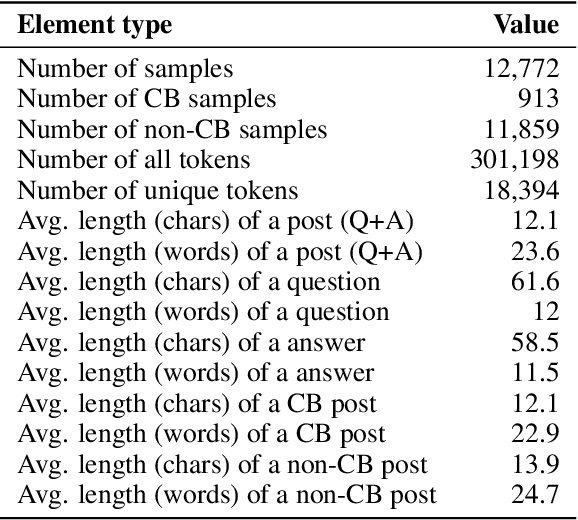
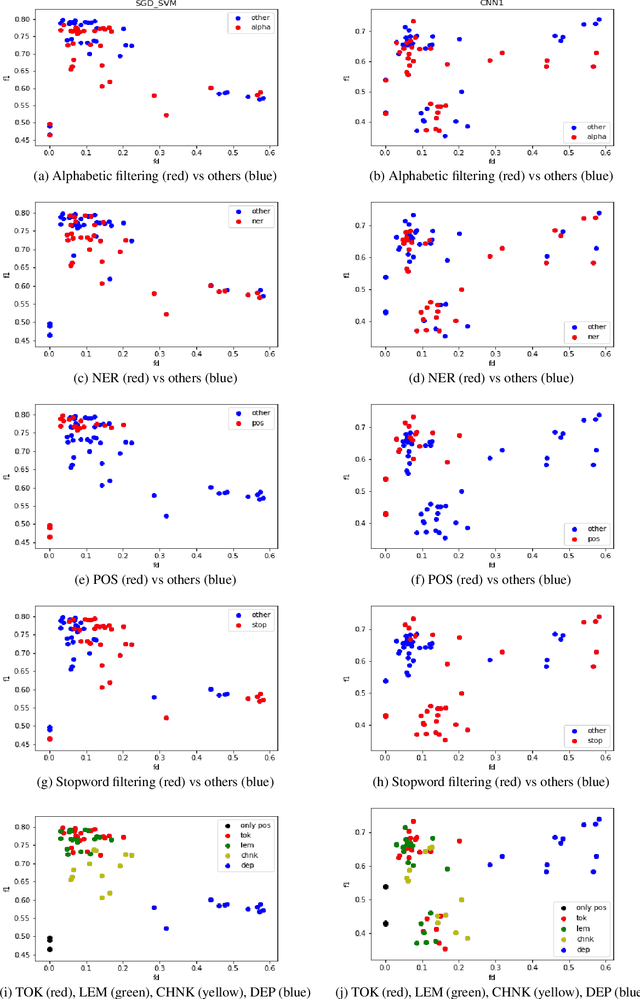
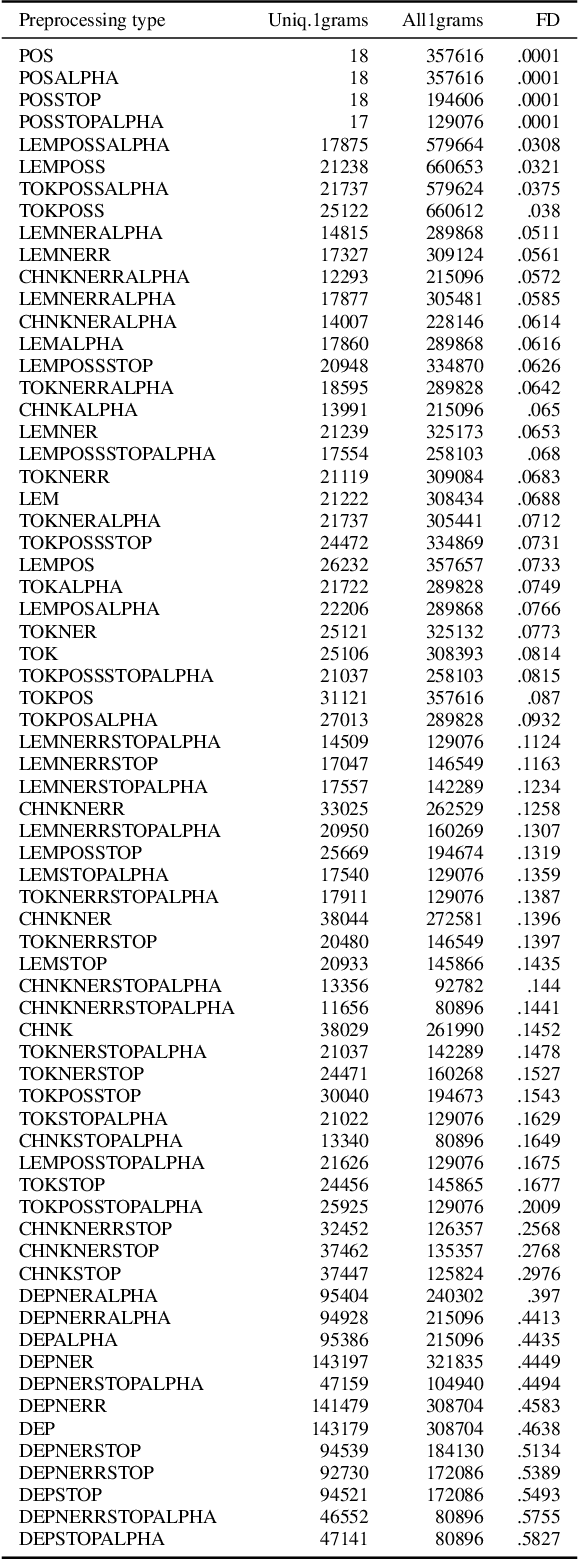
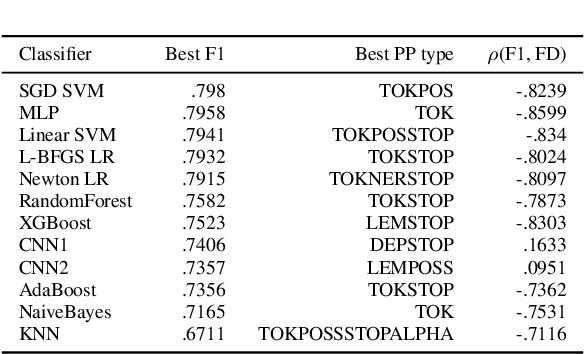
Abstract:In this research. we analyze the potential of Feature Density (HD) as a way to comparatively estimate machine learning (ML) classifier performance prior to training. The goal of the study is to aid in solving the problem of resource-intensive training of ML models which is becoming a serious issue due to continuously increasing dataset sizes and the ever rising popularity of Deep Neural Networks (DNN). The issue of constantly increasing demands for more powerful computational resources is also affecting the environment, as training large-scale ML models are causing alarmingly-growing amounts of CO2, emissions. Our approach 1s to optimize the resource-intensive training of ML models for Natural Language Processing to reduce the number of required experiments iterations. We expand on previous attempts on improving classifier training efficiency with FD while also providing an insight to the effectiveness of various linguistically-backed feature preprocessing methods for dialog classification, specifically cyberbullying detection.
* arXiv admin note: substantial text overlap with arXiv:2111.01689
Initial Study into Application of Feature Density and Linguistically-backed Embedding to Improve Machine Learning-based Cyberbullying Detection
Jun 04, 2022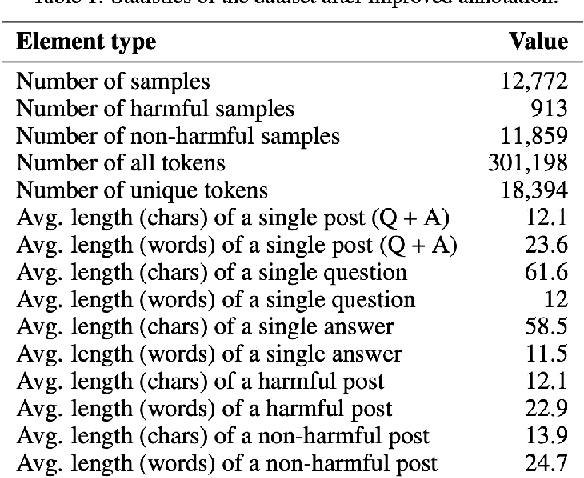
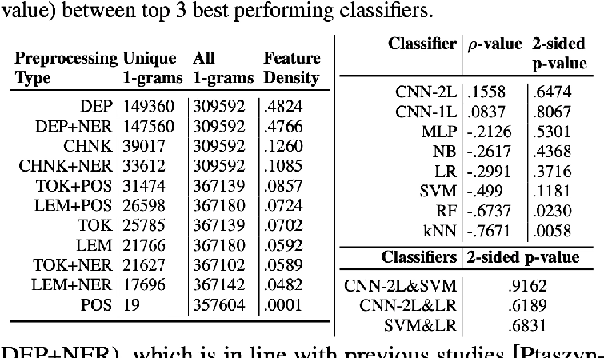
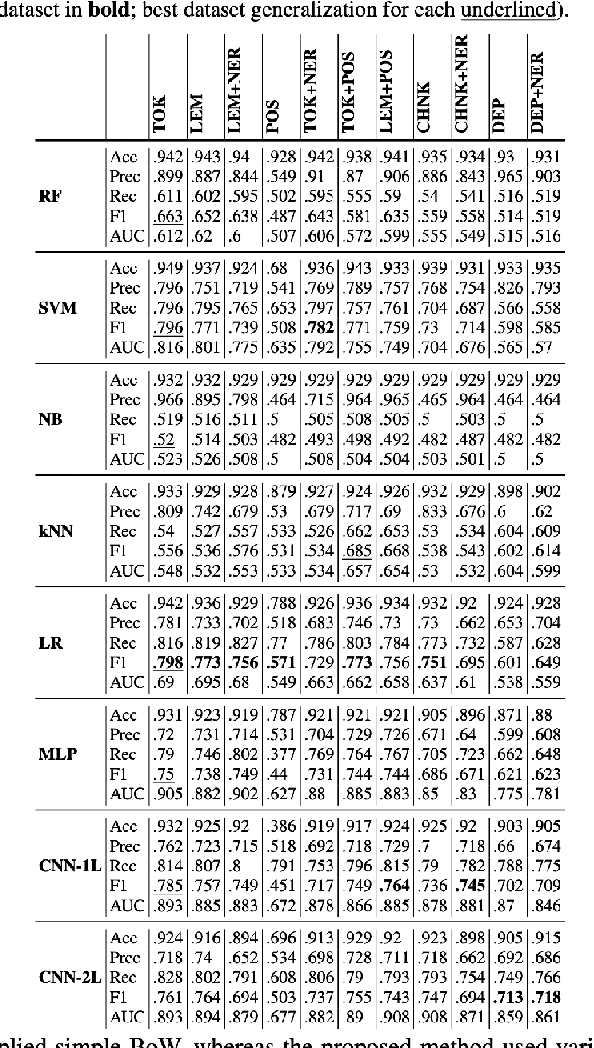
Abstract:In this research, we study the change in the performance of machine learning (ML) classifiers when various linguistic preprocessing methods of a dataset were used, with the specific focus on linguistically-backed embeddings in Convolutional Neural Networks (CNN). Moreover, we study the concept of Feature Density and confirm its potential to comparatively predict the performance of ML classifiers, including CNN. The research was conducted on a Formspring dataset provided in a Kaggle competition on automatic cyberbullying detection. The dataset was re-annotated by objective experts (psychologists), as the importance of professional annotation in cyberbullying research has been indicated multiple times. The study confirmed the effectiveness of Neural Networks in cyberbullying detection and the correlation between classifier performance and Feature Density while also proposing a new approach of training various linguistically-backed embeddings for Convolutional Neural Networks.
Transfer Language Selection for Zero-Shot Cross-Lingual Abusive Language Detection
Jun 02, 2022
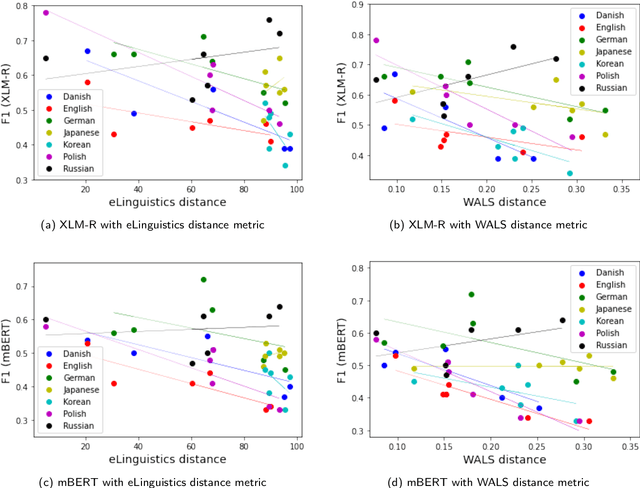


Abstract:We study the selection of transfer languages for automatic abusive language detection. Instead of preparing a dataset for every language, we demonstrate the effectiveness of cross-lingual transfer learning for zero-shot abusive language detection. This way we can use existing data from higher-resource languages to build better detection systems for low-resource languages. Our datasets are from seven different languages from three language families. We measure the distance between the languages using several language similarity measures, especially by quantifying the World Atlas of Language Structures. We show that there is a correlation between linguistic similarity and classifier performance. This discovery allows us to choose an optimal transfer language for zero shot abusive language detection.
Improving Classifier Training Efficiency for Automatic Cyberbullying Detection with Feature Density
Nov 03, 2021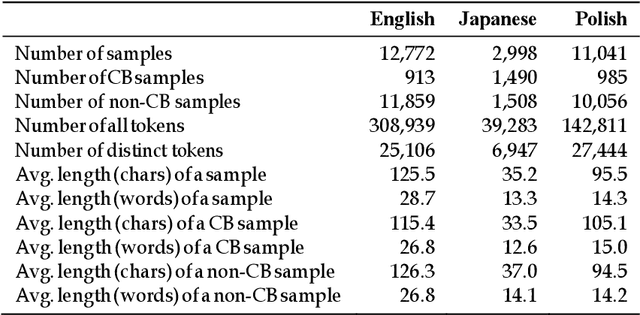
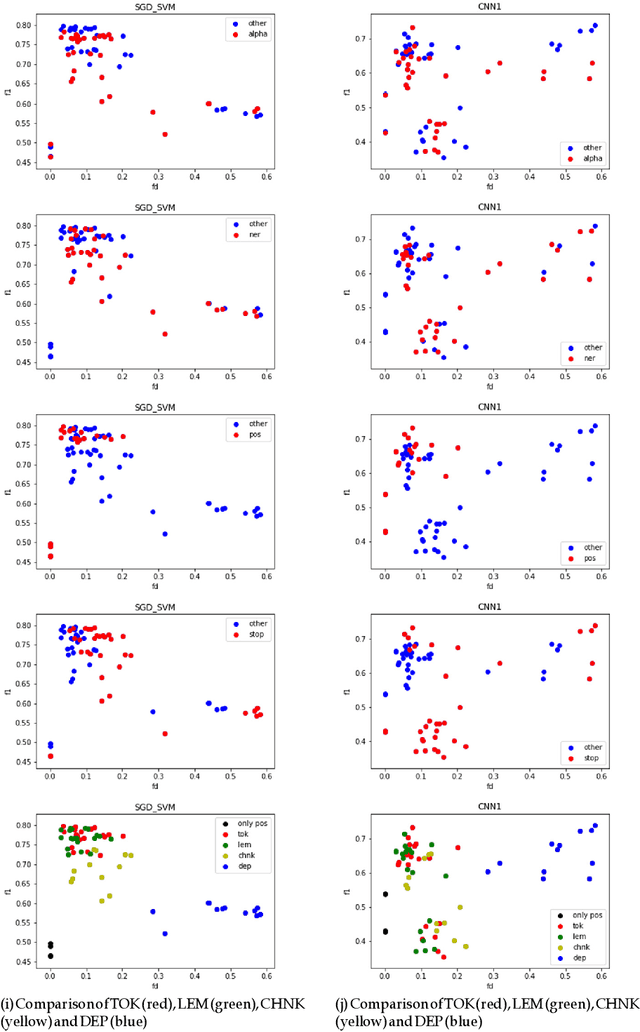
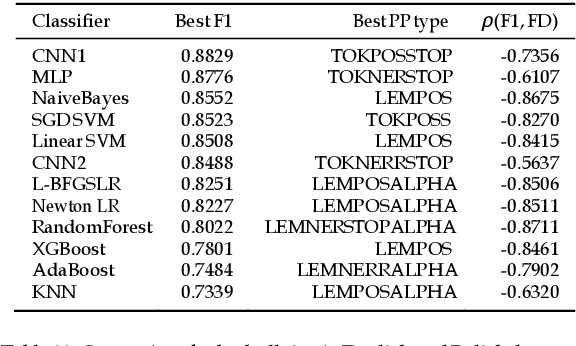
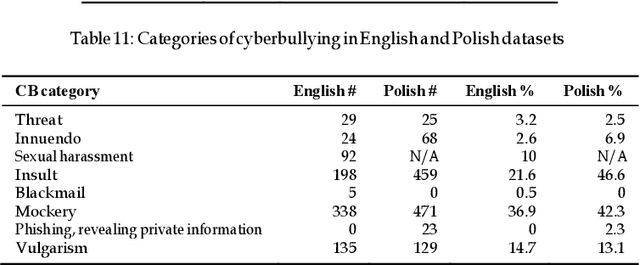
Abstract:We study the effectiveness of Feature Density (FD) using different linguistically-backed feature preprocessing methods in order to estimate dataset complexity, which in turn is used to comparatively estimate the potential performance of machine learning (ML) classifiers prior to any training. We hypothesise that estimating dataset complexity allows for the reduction of the number of required experiments iterations. This way we can optimize the resource-intensive training of ML models which is becoming a serious issue due to the increases in available dataset sizes and the ever rising popularity of models based on Deep Neural Networks (DNN). The problem of constantly increasing needs for more powerful computational resources is also affecting the environment due to alarmingly-growing amount of CO2 emissions caused by training of large-scale ML models. The research was conducted on multiple datasets, including popular datasets, such as Yelp business review dataset used for training typical sentiment analysis models, as well as more recent datasets trying to tackle the problem of cyberbullying, which, being a serious social problem, is also a much more sophisticated problem form the point of view of linguistic representation. We use cyberbullying datasets collected for multiple languages, namely English, Japanese and Polish. The difference in linguistic complexity of datasets allows us to additionally discuss the efficacy of linguistically-backed word preprocessing.
* 73 pages, 4 figures, 19 tables, Information Processing and Management, Vol. 58, Issue 5, September 2021, paper ID: 102616
 Add to Chrome
Add to Chrome Add to Firefox
Add to Firefox Add to Edge
Add to Edge